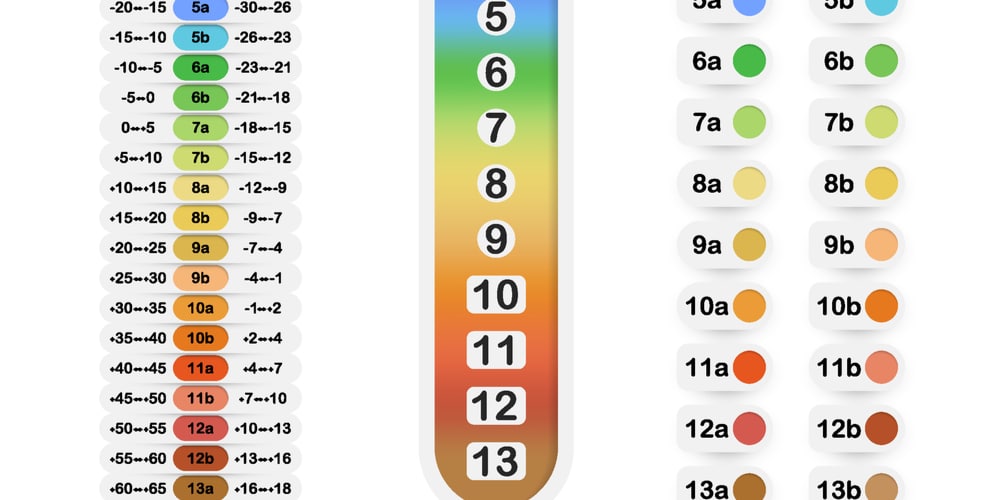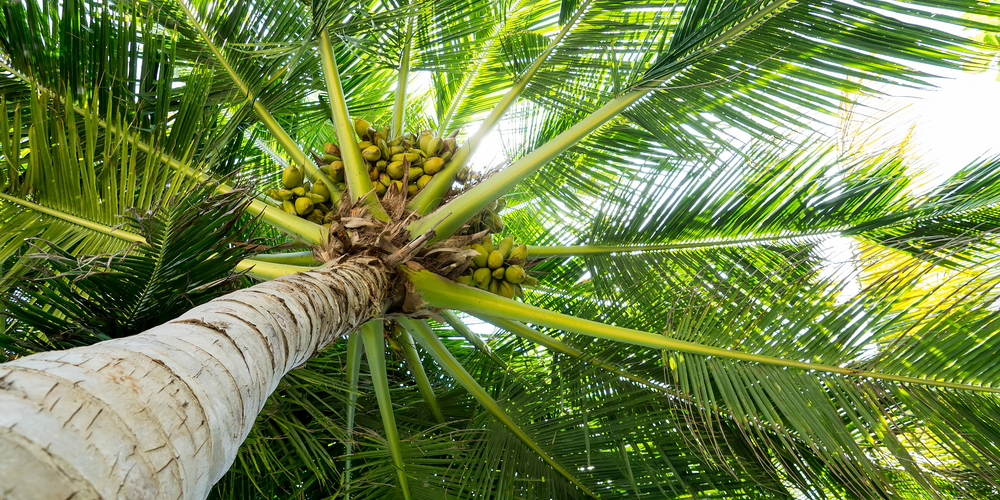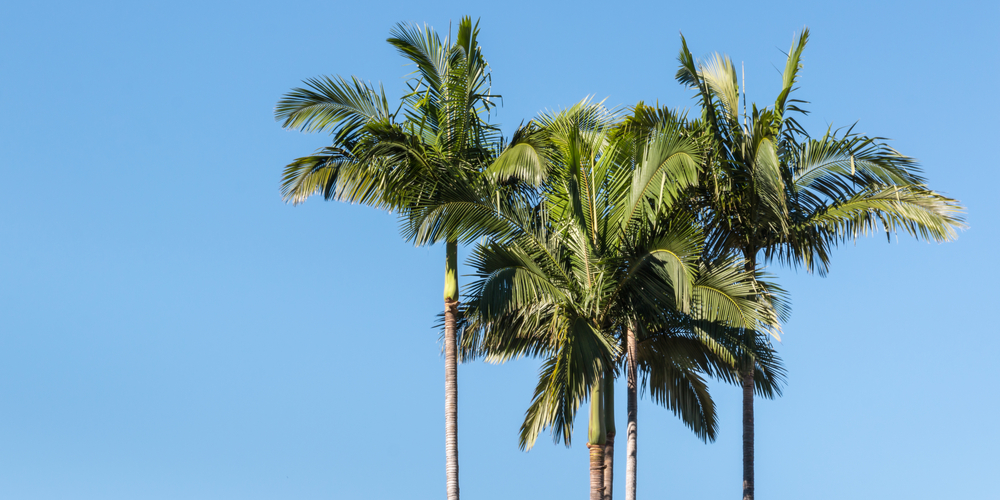A palm tree is a perennial plant that belongs to the Arecaceae family. It grows naturally in regions with high humidity levels and temperatures. This tropical plant usually grows in the form of shrubs, trees, and climbing plants and is identified by its large green fronds that are either feather-like or fan-like. Let’s look at the states that have palm trees.
States That Have Palm Trees
There are over 2,500 species of palms in the world, 13 being native to the continental US. These are:
California Fan Palm- Washingtonia FalieraDwarf Palmetto- Sabal Minor
Cabbage Palmetto- Sabal Palmetto
Paurotis Palm/ Everglades Palm – Acoelorrhaphe Wrightii
Texas Palmetto- Sabal Brazoriensis
Florida Royal Palm – Roystonea Regia
Mexican Palm – Sabal Mexicana
Florida Silver Palm – Coccothrinax Argentata
Needle Palm – Rapidophyllum Hystrix
Florida Thatch Palm – Thrinax Radiata
Scrub Palm- Sabal Etonia
Florida Cherry Palm/ Buccaneer Palm Pxeudophoenix Sargentii
Miami Palm-Sabal Miamiensis (just about to be extinct)
Among these, the California fan palm, also known as the California Washingtonia or the desert palm, is the largest and the only palm tree native to western North America.
USDA Zones

Palms do well in the USDA Hardiness areas 12a to 13b. The tough palms that thrive in cooler, seasonal temperatures can also withstand the USDA Hardiness Zones 8a – 11a. In the U.S, Palm trees can only grow well in states like Florida, North Carolina, Georgia, South Carolina, Louisiana, California, Texas, Arizona, and Hawaii. Hawaii has over 21 different varieties of palm species, which is more than all the other states.
How to Care for a Palm Plant

While many people who want to grow a palm tree as a house plant will want to purchase a sprouted young palm, it’s possible to grow palms from seed. First, you need to place palm seeds underneath a layer of soil. The plant should be germinated in a warm, humid location, and the time it’ll take will depend on the species of the palm- certain types of palm take two months while others may take up to 6 months. Once the plant has sprouted a few leaves, you can transfer it to a place with high humidity of at least 75° Fahrenheit.
When it comes to caring for palm trees, it’s liberating to know they are one of the easiest trees to maintain. Here’s how to care for a palm tree:
Avoid direct sun
Palm trees need to be kept in partial shade or in an indoor environment that receives indirect sunlight. Full, direct sunlight may burn the delicate leaves of the palm tree, causing brown leaf tips or curled leaves.
Keep the soil moist
Palm trees need a fine balance of humidity and moisture. You can keep your palm moist by placing it in an area with a humidifier or misting the leaves. However, it’s vital that you remember palm plants are susceptible to root rot, and you shouldn’t expose them to too much moisture to prevent it– yellowing leaves characterize root rot. Drain your container adequately of excess water for healthy growth, but don’t let the soil become too dry—the leaves will wither or develop brown tips if the plant goes too long without water.
Be wary of pests
Palms are susceptible to attack by spider mites and mealybugs. When this happens, be sure to treat the plant with insecticidal soaps to put these pests at bay.
Prune occasionally
It’s important that you prune off dead leaves that are entirely brown or have turned yellow at the base –at the soil or near the stem. Doing this allows for new growth and protect passersby and your property from damage. Pruning also deters animal and pests infestation, promotes your plant’s natural shape, and keeps your palm healthy.
While at it, be careful not to over prune because the fronds are one of the main sources of nutrition for your palm—they also protect the plant from the elements. Besides, don’t cut the top of your palm tree because it’ll cease to grow.
Fertilizing your palm
Fertilizing your palm a few times a year keeps it properly fed, increases yield, and ensures the soil is supplied with the right nutrients. You can use specialized palm fertilizer or general fertilizer to help provide valuable nutrients to your palms, like potassium, iron, and magnesium.
Related article: Are There Palm Trees in Georgia?
